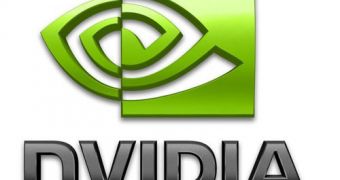Since it hasn't been allowed to make chipsets for x86 CPUs for a while. NVIDIA has been promoting its Tesla GPU computing modules on the HPC front and has been optimizing its graphics cards to offload tasks from the CPU, but analysts appear to think that the company may not make it in the long run if it doesn't somehow once again gain access to x86 technology.
So far, NVIDIA has been able to perform as it has because of the GPU (graphics processing unit), but it may be faced with problems once Advanced Micro Devices and Intel launch their respective next generations of CPUs with integrated graphics (APUs in the case of AMD).
This will make it a bit tricky for the Santa Clara GPU maker to hold onto its graphics market share.
On the bright side, Intel recently reached a settlement with the FTC and agreed to modify its IP agreements with AMD, NVIDIA and Via technologies, allowing them to consider mergers and join ventures.
Thus, it would be possible fro NVIDIA, should it consider it, to collaborate with VIA for CPU-GPU hybrid chips, especially knowing that Intel will extend the latter's x86 license for five years after the current one expires, which is in 2013.
NVIDIA could also collaborate with Qualcomm or Broadcom, but this is not really likely considering the GPU developer's focus on chips and the fact that technology licensing doesn't bring it much revenues.
All in all, GPUs and CPUs will continue to coexist for a while, but NVIDIA may have to come up with special ideas in order to maintain its position.
"We believe that NVDA may need to move aggressively and acquire x86 processor capability through licensing or a merger with Via Technologies (Taiwan)," said analyst Krishna Shankar from ThinkEquity market research company in a note to clients, reports International Business Times.

 14 DAY TRIAL //
14 DAY TRIAL //